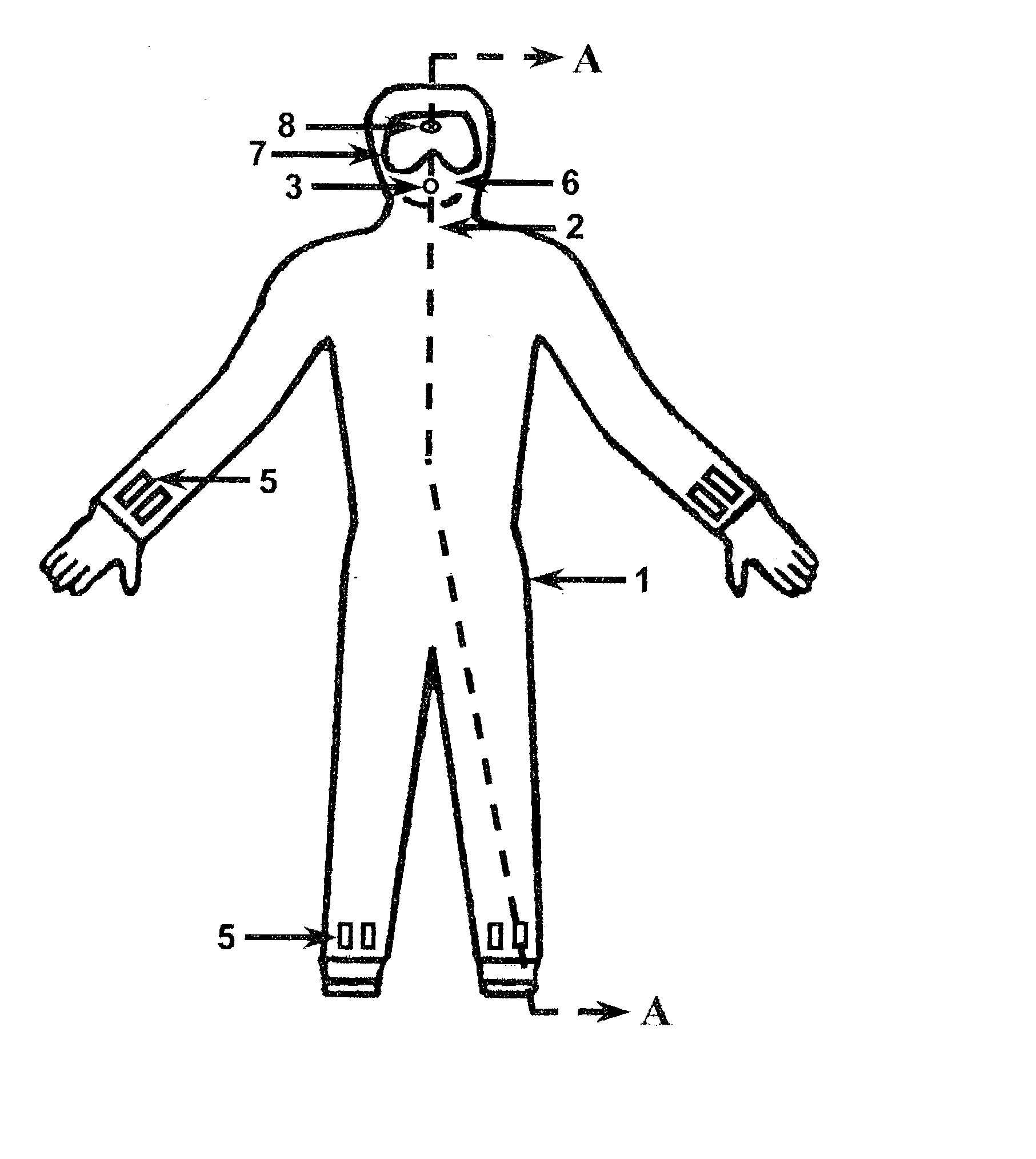Ventilated, breathing-powered protection suit
a protection suit and ventilator technology, applied in the direction of breathing protection, heat protection, protective garment, etc., can solve the problems of reducing the service life of the suit, so as to prevent collapse and reduce the cost of production.
- Summary
- Abstract
- Description
- Claims
- Application Information
AI Technical Summary
Benefits of technology
Problems solved by technology
Method used
Image
Examples
Embodiment Construction
[0020] Item (1) is the suits body, constructed of a permeable, impermeable or semi-permeable material. The suit can cover the head, hands and feet of the wearer as shown. The suit can be designed to prevent collapse and the blockage airflow that could occur under the slight negative pressure generated while inhaling. Any of the well-known techniques to prevent loss of airflow can be used, such as incorporating: stays, reinforcing loops, three dimensional mesh, batting, convolutions tubes or netting.
[0021] Item (2) is an extension of the suit's body that connects to the breathing mask. The connection from the mask to the suit's interior could be constructed from a flexible tube or any other well-known connective device.
[0022] Item (3) is a one-way valve (also known as a check valve or automatic valve) that allows the exhaled air to exit the breathing mask to the ambient while preventing reverse flow into the breathing mask. It can be of any of the well-known designs such as flap va...
PUM
 Login to View More
Login to View More Abstract
Description
Claims
Application Information
 Login to View More
Login to View More - R&D
- Intellectual Property
- Life Sciences
- Materials
- Tech Scout
- Unparalleled Data Quality
- Higher Quality Content
- 60% Fewer Hallucinations
Browse by: Latest US Patents, China's latest patents, Technical Efficacy Thesaurus, Application Domain, Technology Topic, Popular Technical Reports.
© 2025 PatSnap. All rights reserved.Legal|Privacy policy|Modern Slavery Act Transparency Statement|Sitemap|About US| Contact US: help@patsnap.com


